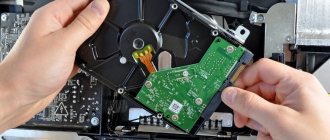What are the reasons for writing off furniture
The reasons for writing off the furniture of work or office premises can be very different.
Furniture items that have become unusable and the need to replace them are the first and most common reason.
Another reason for a change of environment may be the desire of management to change the design of the workspace. In both cases, the need for write-off must be documented and confirmed by the relevant act.
Home furniture lasts longer than that used in office, work or public spaces. These include offices, shops, cafes, doctors' offices, hotels, concert halls, etc.
Office furniture is used more often than home furniture. The result is breakage, irreparable dirt or physical deformation of the upholstery.
Annual inventory documents are needed to collect and record information about the degree of wear or deformation of office furniture or furniture sets used in public premises. If the time of deformation can be recorded, then an additional report is drawn up about this.
The act recording the fact of deformation and annual inventory documents must contain the types of damage to furniture sets. This is necessary for processing its subsequent write-off.
Reference
Examples of such deformations include:
- physical deformation of the furniture frame (legs, seats or backs of chairs; walls, shelves or doors of cabinets, legs or table tops);
- physical deformation of the mechanisms that ensure the functioning of furniture products (chair casters, door hinges, drawer pull-out mechanisms, etc.);
- excessive wetness or overheating of furniture parts, leading to their deformation;
- fading or physical wear of furniture upholstery, as well as its rupture or other form of deformation;
- cuts, chips or cracks on the surface of furniture or other parts of the cladding;
- chemical or other irremovable contamination of the surface or other part of furniture products.
There is one condition that is sufficient for the unconditional write-off of furniture: the material costs of repairs and elimination of deformations are equal to or higher than the market value of similar items. Data on the cost of new furniture should be provided by furniture suppliers.
Additional information on how to draw up an act, incl. Furniture write-off act can be found.
Registration of write-off of furniture fit for use
Redesigning or updating the design of an office, retail space, or restaurant space may result in purchasing new furniture and discarding the old one. At the same time, old office furniture can be written off before it loses its performance characteristics or a physical defect is discovered.
For such cases, data on the service life of furniture is used, which are established by the supplier or specified in the technical data sheet of the products.
Decree of the Government of the Russian Federation dated June 16, 1997 No. 720 regulates the procedure for presenting information on the service life of furniture products and recording it in the technical passport.
According to this regulation, all furniture manufacturers must set its service life. The use of furniture products beyond the established period is prohibited by law, because it poses a danger to people and the environment.
If the technical documentation contains data on its service life, the reasons for writing off the furniture in the act can be formulated as follows:
“Write off office furniture in accordance with Appendix 1 to the act due to the expiration of the service life established by the manufacturer of the specified furniture, Office Furniture LLC, in the technical passport (Appendix 2), as posing a potential danger to the health of employees, property of the organization and the environment in accordance with the standards of the Government Decree RF dated June 16, 1997 No. 720″.
The procedure for writing off upholstered furniture is formalized in a similar way: the upholstery of furniture products has lost its performance due to abrasion, physical deformation or irremovable contamination, frame breakage or its irreversible deformation. In this case, the cost of potential repairs will significantly exceed the cost of a similar set of upholstered office furniture.
If physical defects in upholstered furniture cannot be detected, and it needs to be written off due to work being carried out by the administration to renovate the office space, then the basis for write-off becomes the expired shelf life of the furniture products.
Write-off of furniture in accounting
If the fact of damage, impossibility of restoration or repair is established, then the furniture must be written off. The basis is the decision of the inventory commission, which is made based on the results of the measures taken to assess the physical condition of the company’s property.
The loss of material objects (that’s what it’s called in accounting) must be documented in a furniture write-off act.
The law does not establish a single standard form for the act of writing off furniture products. Each organization can develop such a form independently. The only condition is that it must be fixed and approved by the local regulations of the organization.
The act must indicate the reasons for writing off the products.
Reference
In addition to them, the document must provide the following information:
- the name of the furniture items and an indication of their quantity to be written off based on the results of the inventory;
- inventory numbers of write-off items according to the inventory compiled during the inventory;
- damage to objects that were identified during the inspection;
- the decision and its justification made by the commission regarding the deregistration of the specified material objects;
- information about the composition of the commission: position, full name of the commission member and his signature.
The methodology for writing off furniture items is the same, regardless of the reasons for the removal of material objects from economic accounting.
Standard postings for furniture accounting
Accounting for inexpensive furniture is carried out according to the standards of PBU 5/01. For organizations operating under a simplified taxation scheme, assets worth up to 100 thousand rubles with a long period of use are recognized as material costs. This eliminates the possibility of calculating depreciation for a specific object. Write-off is allowed after the furniture is put into use and the bill for the new property is paid.
REMEMBER! Under the simplified tax system, only the cost of furniture purchased to solve the problems of the main activity can be written off as material expenses. For example, a refrigerator for personal use by staff cannot be recognized as a justified expense; its cost should not increase the amount of expenses when calculating the taxable base.
When assigning part of the furniture to the inventory, it is necessary to approve a scheme for ensuring the safety of such assets. For this purpose, it is recommended to use an off-balance sheet account in accounting. This way, the enterprise will be able to attribute the cost of inexpensive items to expenses immediately, but will not forget about the existence of purchased and used furniture, which will be reflected in the accounting data until its cost is written off from the credit of the off-balance sheet account.
To document the movement of furniture, you can use the recommended forms of primary forms or your own templates. In the latter case, the documents will have legal force if a number of requirements are met:
- the form contains all the mandatory details inherent in the primary documents;
- the sample used is approved by the accounting policy;
- The document must be correctly formatted and no errors or omissions are allowed.
We invite you to familiarize yourself with: Forensic expert, independent examination, training of experts, vacancies
When any piece of furniture is disposed of, a write-off report is drawn up. This form is also required for disposal, resale or gratuitous transfer.
When a company receives furniture from a counterparty, accounting records are created for the receipt of new assets and their payment:
- D08 - K60 - at the time of registration of purchased expensive items;
- D19 – K60 - in the amount of VAT on purchased furniture;
- D60 - K50 or 51 - when making a payment to the supplier to repay the debt for the assets received.
The accountant is limited to this set of postings if the furniture was not put into operation immediately after purchase. To start using assets, they must be officially transferred in accounting to the fixed assets involved in daily activities (provided that the furniture set has already been assembled and installed). This is done by transferring the value of the object from credit 08 to debit 01 of account. Accrued depreciation is collected on account 02.
The procedure for writing off expensive furniture from the balance sheet will be accompanied by standard correspondence:
- D91 - K01 - when decommissioning an asset in the amount of its residual value;
- D02 – K01 – a record is generated to reflect the write-off of depreciation charges;
- D10 - K99 - correspondence compiled in situations when furniture is taken out of service and disassembled into component materials, which will subsequently be capitalized and used to partially cover the needs of the enterprise;
- D91 – K99 – the amount of funds received by the company as a result of decommissioning a set of furniture;
- D99 - K91 when the institution receives a loss after disposal of furniture items.
If furniture elements can be classified as inventories based on their estimated value, then the accounting entries will be different:
- D10 – K60 – when reflecting the fact of receiving inexpensive furniture;
- D19 – K60 – correspondence used to record the amount of VAT;
- D20 – K10 – write-off of the value of acquired assets after they are put into operation;
- D004 - to record the fact of receipt of inexpensive furniture.
What characteristics of furniture are considered for write-off? inventory numbers);; results of inspection of furniture by a commission consisting of.
If the furniture is damaged
Furniture that is used in commercial premises, be it restaurants, hotels, offices, shops, factories, becomes unusable much earlier and more often than what happens with structures at home.
During intensive use, individual units may break down, become irreversibly dirty, tear, scratch, or fade. Data that such property has become unfit for use is recorded when compiling inventory papers or discovering similar facts.
The documentation shows the types of damage, for example:
- breakdown of the frame part, including legs, tabletops, seats, walls, armrests, doors;
- breakdown of the main functioning mechanisms that facilitated the operation of structures;
- deformation of individual elements as a result of excessive heating, high humidity, and wetness;
- wear of the upholstery as a result of the influence of the temporary factor;
- defects associated with facing furniture surfaces.
All these damages imply the need to write off and note these aspects in the act. There is only one condition: the costs of restoration exceed the costs of purchasing new units. Information about how much repair work will cost can be obtained from organizations that specialize in this type of service.
Main types of furniture defects
Furniture defects can be divided into several types based on the reasons for their occurrence:
- Defects by furniture manufacturers are associated with the use of low-quality materials, as well as non-compliance with technological regimes and technical requirements;
- Defects in the operation of transportation and storage of furniture;
- Natural aging of furniture.
It is worth saying a little more about these defects and, if possible, the reasons for their occurrence. As already mentioned, the appearance of these defects is mainly due to the use of low-quality materials in production, non-compliance with technological regimes and technical requirements, in other words, careless or insufficiently qualified furniture manufacturing.
Damage and defects of this type do not appear immediately, usually after 3-4 months
- Presence of knots and cracks, uneven color
- uneven width and thickness of furniture parts
- Cracking and warping (changes in the shape of lumber, blanks and parts when they dry or moisten) of panel elements;
- peeling off mosaic elements
- swelling of chipboard when used instead of more expensive and moisture-resistant MDF
- curliness (a defect in the structure of wood, expressed in a tortuous or random arrangement of wood fibers)
- Curvature, discrepancy between geometric dimensions
- Cross-grain (a defect in the structure of wood, expressed in the deviation of the direction of wood fibers from the longitudinal axis)
- Peeling and cracking of the facing layer;
- and others
- Loosening or destruction of tenon joints;
It is possible to avoid the appearance of such defects only by carefully inspecting the furniture after manufacture or during purchase. Such defects include:
- Ripple,
- Wood erasing
- Dents, abrasions, scratches, snags, chips
The main reasons for writing off furniture (tables, chairs, etc.)
d.) - all about taxes
Furniture is an element that every enterprise has.
And if it does not directly participate in economic activity, then it has an indirect impact on it, since it requires periodic maintenance and incurring costs.
Furniture in an enterprise means not only classic office “new things”, but also everything that has a similar design - furnishings for retail premises, workshops, warehouses, catering establishments.
The following are the general points:
- desire for renewal (purchase of more status furniture, reorganization of the enterprise).
- loss of functionality (breakage, deformation);
- external defects (dirt, cracks, scratches, fading);
The service life of furniture depends on the manufacturer, type and variety and is determined at the factory. Furniture manufacturers have an obligation to establish this parameter in accordance with Decree of the Government of the Russian Federation of June 16, 1997 No. 720. After this period, the structures can be dangerous not only for people in the room and working with them, but also for the environment.
Decision-making traditionally occurs when the estimated cost of repair or restoration is commensurate with or greater than the cost of acquiring new items equipped with identical characteristics. Traditionally, this verdict is made by a special commission responsible for conducting an inventory.
Furniture that is used in commercial premises, be it restaurants, hotels, offices, shops, factories, becomes unusable much earlier and more often than what happens with structures at home.
During intensive use, individual units may break down, become irreversibly dirty, tear, scratch, or fade. Data that such property has become unfit for use is recorded when compiling inventory papers or discovering similar facts.
Sample defect report
There is no established template according to which the write-off procedure is carried out, so the enterprise has the opportunity to independently develop and approve it. The completed act must contain the following information:
- the name of the furniture structures that are being written off;
- total quantity (in units);
- identification codes and signs;
- the results of the inspection by a commission including senior employees of the organization;
- causative factors (breakage, deformation, defects);
- general conclusion;
- signatures belonging to responsible parties.
Documents for download (free)
- Form No. OS-4b
If we look at a specific example of a document, we can note that it includes several points:
- “Hat”, which indicates the word “I approve”, the name of the general director, and the date of compilation. Then it is signed with the word “Act” in the center, and the title of the document from a new line in the middle is “write-off of furniture, inventory, equipment.” All members of the commission are listed below, it is indicated that they examined certain pieces of furniture and found them to be written off on certain grounds.
- The basic part, represented by a table. The first column displays the name of the structures to be decommissioned. The second indicates the inventory number, then the unit of measurement, quantity. The last column is the general technical condition and causal factors.
- The final part begins below the table and includes the immediate conclusion, information about the group members, and results.
The document must be drawn up in a special form and include the necessary signatures and seals.
Reasons for different types
The reasons for write-off largely depend on the type of furniture. Let's look at the most common of them.
Office chairs and armchairs
Among the reasons causing the need to write off office chairs and chairs, the following points can be highlighted:
- damage to the leg, back, armrest;
- seat deformation;
- faded upholstery;
- scratches and holes in the upholstery material;
- loss of aesthetic properties of wood.
Closet
- breakdown of fittings (mechanical parts);
- the formation of noticeable gaps due to weakening or unsticking of tenon elements;
- warping of doors, insert shelves;
- breakdown of fittings;
- darkening of varnish;
- darkening of wood;
- destruction of the structure of the material due to the appearance of stains (during exposure to chemicals), aging, fading;
- corrosion;
- damage to the facing material by mold
Carpet
Despite the fact that carpet is not technically furniture, it is subject to write-off according to the same principle as other structures discussed earlier. Reasons include discoloration, formation of bald spots, spots, and holes.
Curtains
More often than not, curtains are susceptible to fading due to exposure to sunlight. But other defects may also form, such as the appearance of spots and holes.
Cushioned furniture
In addition to standard furniture, upholstered furniture is also subject to write-off. Such procedures are carried out in hotels, sanatoriums, and boarding houses. Structures located in public areas quickly deteriorate due to active use and negligence of visitors and staff.
The reasons for write-off measures include wear of the upholstery, sagging springs, cracks and chips.
Of course, an unaesthetic interior can easily ruin the organization’s reputation and reduce the flow of clients. In this regard, write-offs must be carried out in a timely and competent manner.
What characteristics of furniture are considered for write-off?
When we talk about furniture, we mostly think about office furniture. Although this could also be the setting of retail or industrial premises, as well as catering premises.
General points for which furniture may be considered unsuitable for further use are:
- Partial or complete loss of basic mechanical functions:
- damage to legs, back, armrests, walls;
- deformation of the chair seat or work surface of the table;
- breakdown of mechanisms (for example, adjusting the height or tilt of the back of an office chair).
- Fatal appearance defects:
- indelible stains;
- noticeable defects in upholstery or painting (varnishing);
- Changes in color or durability of the upholstery (for example, as a result of exposure to sunlight).
NOTE! The furnishings of an office or restaurant hall are often the “face” of the owner company, so the role of appearance defects in determining the reasons for the write-off of a table or chair can be no less important than the loss of operational characteristics.
Reasons for writing off furniture. Types of furniture damage
Update: June 26, 2021
The interior design of work premises can be updated for various reasons. This may be the need to replace pieces of furniture that have fallen into disrepair, but there may also be a desire of management to change the design of the offices, decorating them in a single corporate manner. How to correctly formulate in this case the reasons for writing off the furniture and what types of damage to the furniture will be the reason for drawing up a document on its write-off, we will consider further.
Furniture purchased by an organization for use in public premises (offices, hotels, cafes, shops, doctors' offices, concert halls, etc.) falls into disrepair much more often than its domestic counterparts. As a result of intensive use, individual items may be broken, dirty, the upholstery may be torn, etc.
Information that the organization’s property has fallen into disrepair is recorded in the process of drawing up annual inventory documents or at the time such facts are discovered. The documents drawn up indicate the types of damage to furniture for further write-off, for example:
- damage to the furniture frame (legs, seats, backs of chairs and armchairs, walls, shelves and doors of cabinets and cabinets, legs and table tops, etc.);
- breakdown of mechanisms that ensure the operation of furniture (door hinges, drawer mechanisms, chair casters, etc.);
- deformation of individual parts of furniture due to wetness, excessive heat, etc.;
- wear and tear of the upholstery (fading, thinning, tearing, etc.);
- defects in furniture surface cladding (cuts, cracks, chips, etc.);
- irremovable stains on furniture surfaces, etc.
All of the listed damages can become a reason for writing off the furniture in the write-off act if an essential condition is met: the costs of eliminating these defects are equal to or exceed the cost of purchasing a similar new piece of furniture.
Information on the cost of repairs can be provided by organizations specializing in this type of service.
Is it possible to write off boring but still usable furniture?
If the desire to purchase new furnishings for an organization is not due to the fact that the furniture has lost its performance qualities, but to another reason, for example, updating the overall design concept of a restaurant or the transition of a business to the “luxury” segment, which requires a more solid office environment, then there are no physical defects in the furniture for write-off .
In this case, you can be guided by the service life of the furniture established by the manufacturer in the technical data sheet.
Furniture manufacturers are required to set a service life for it in accordance with Decree of the Government of the Russian Federation dated June 16, 1997 No. 720. After this period, furniture can become dangerous to people and the environment. Therefore you cannot use it.
If the service life of the furniture is established in the technical passport and by the time of write-off it has expired, then the reason for writing off the furniture in the write-off act can be formulated as follows:
“Write off office furniture in accordance with Appendix 1 to the act in connection with the expiration of the service life established by the manufacturer of the specified furniture LLC Furniture for Everyone in the technical passport (Appendix 2), as posing a potential danger to the health of employees, property of the organization and the environment in accordance with the standards of the Government Decree RF dated June 16, 1997 No. 720″.
The reasons for writing off upholstered furniture are determined similarly. If the furniture has lost its performance qualities - the upholstery is torn, worn out or dirty, the frame is broken or deformed, etc., then it can be written off if the cost of repair costs is comparable to the cost of a new similar item.
If upholstered furniture has no physical damage, then the basis for write-off may be the expired service life established for it.
Furniture defects for write-off in accounting
Furniture in a company can be used not only in office premises, but also in canteens, production workshops, warehouses and other departments of the company.
The resulting damage can be divided into defects in appearance and loss of mechanical properties and functions.
External damage includes the following:
- pollution that cannot be eliminated;
- damage to upholstery, paint and other top coverings;
- discoloration (fading, abrasions).
As for mechanical functions, this type of defect in some cases makes further operation of objects impossible. These include:
- breakdown of functioning mechanisms, such as adjustment of height, tilt, opening/closing;
- damage to legs, frames, walls, making objects unsuitable for use;
- deformation of surfaces, seats.
How can defects in upholstered furniture be identified for write-off? In order for the company to be able to legally write off, it will be necessary to conduct an inventory, during which it will be determined that the valuable properties of this property have been lost.
In the future, it will be necessary to determine whether it would be rational to transfer the furniture for repairs. To do this, it is necessary to compare the costs required to repair the damage and the purchase of new similar pieces of furniture.
In the event that the damaged furniture cannot be restored, the inventory commission, based on the results of the measures taken, makes a decision to write off this object.
The furniture write-off act (reasons are determined by the company independently) is a universal document for documenting the loss of material objects. There is no special form among the unified accounting documents, which gives companies the opportunity to independently determine the format of this document and secure the sample in internal documentation.
In addition to the reason for writing off the furniture, it is advisable to indicate the following information in the write-off act:
- names of pieces of furniture indicating the quantity that, according to the results of the inventory, are subject to disposal;
- their numbers in accordance with the data of the compiled inventory list;
- damage identified during the inspection;
- a justified decision of the commission to write off these material objects in accounting;
- information about the composition of the commission: position held, full name and signature.
Often management expresses a desire to write off some furniture, despite the fact that its useful properties have not yet been lost, but its appearance does not correspond to the prestige of the company. For some organizations, appearance is a significant factor and allows them to attract more partners to cooperate. What should you do in this case? When furniture that does not have defects is written off, the organization can be guided by the technical passport of the item. In most cases, this document specifies the service life specified by the manufacturer. If the service life of an object has expired and information about this is reflected in the passport, even an object in a usable condition can be deregistered.
The method of disposal of furniture items is used by companies, regardless of the reasons for which these objects are written off in economic accounting.
Carrying out accounting of office equipment
Almost all office equipment objects are classified as means of mechanization. The service life of such items is more than 1 year. Typically, office equipment is taken into account as part of the operating system. During manipulations, the actual value of the property is taken into account.
Reflection of objects in accounting occurs on the basis of the acceptance certificate, which was drawn up in advance. The paperwork is completed using form 0504101. According to the new rules, today it is not necessary to draw up a similar act to account for office equipment. However, upon receipt of new property, the institution must draw up an order for the acceptance of material assets. The document is often used as the basis for recording office equipment in accounting.
Note! From the month that follows the period when office equipment is included in accounting, depreciation begins to accrue. The action is carried out until the full cost of the property is paid off or its disposal occurs.






